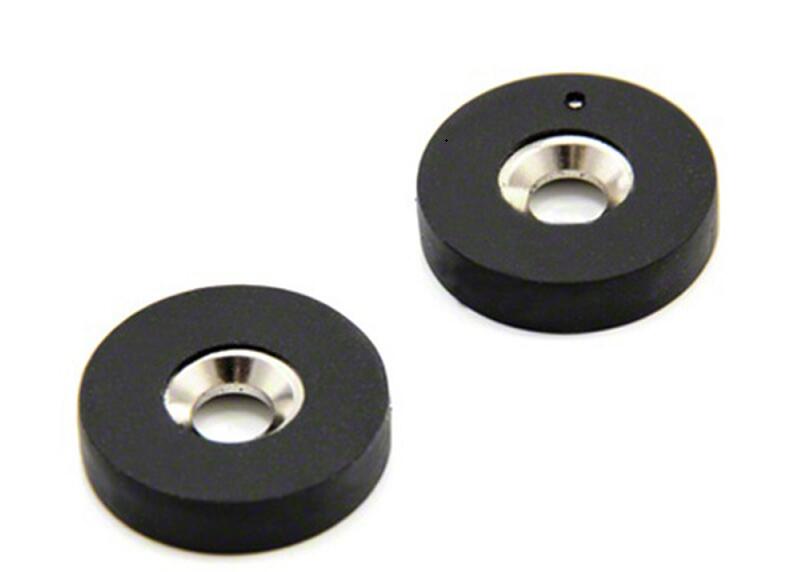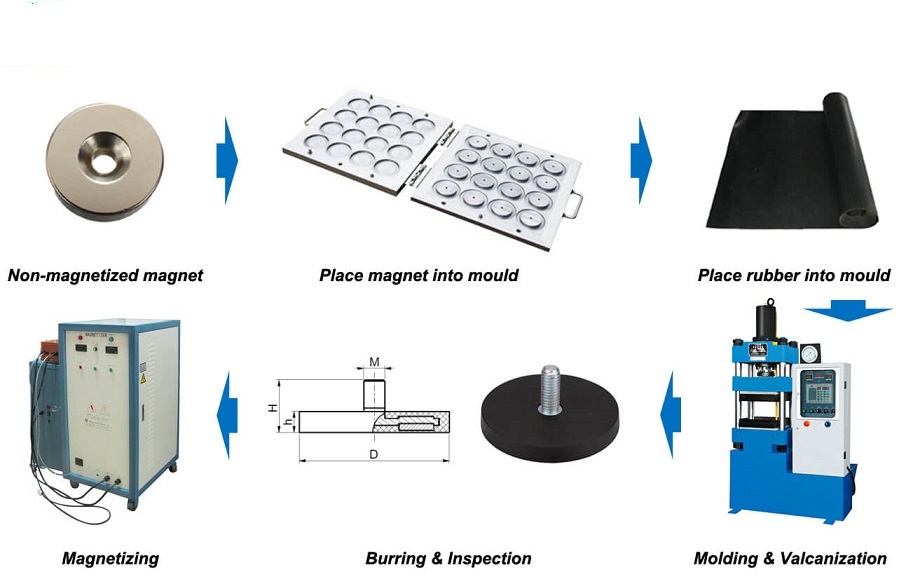Rubber-Coated Magnet Types & Advantages
Rubber coated magnets, also known as waterproof magnets, are one of the most commonly used tool magnets. In this article, let's take a closer look at the rubber-coated magnet types & advantages.
 Rubber-Coated Magnet Types & Advantages
Rubber-Coated Magnet Types & Advantages
The Manufacturing Process of Rubber-Coated Magnets
For rubber-coated magnets, vulcanization is the most important step in the entire manufacturing process. Vulcanization is a chemical method of converting rubber into a more durable material by adding sulfur or other equivalent curing agents or accelerators. These additives change rubber by forming crosslinks between chains under certain pressure and temperature. Here are the manufacturing steps for the rubber-coated magnet:
 Manufacturing Steps of the Rubber-Coated Magnet
Manufacturing Steps of the Rubber-Coated Magnet
Different Types of Rubber-Coated Magnets
Rubber coated magnets mainly include the following types: 1. Threaded Stem-Type Rubber Coated Magnet 2. Screw Socket-Type Rubber Coated Magnet 3. Internal Thread-Type Rubber Coated Magnet 4. Countersunk Hole-Type Rubber Coated Magnet Different Types of Rubber-Coated Magnets[/caption]
Different Types of Rubber-Coated Magnets[/caption]
Advantages of Rubber-Coated Magnets
Rubber-coated magnets have the following advantages: 1. Rubber-coated magnets can be applied with different types of magnets at different temperatures and tensile forces. 2. The special design of the magnetic circuit will ensure that the rubber-coated magnet has a higher tensile force. 3. The rubber coating can not only protect the rubber-coated magnet from corrosion but also keep the working surface from damage. 4. The rubber coating will generate a very fine shearing force on the rubber-coated magnet. 5. Rubber-coated magnets can accommodate a range of standard fasteners and accessories.
Conclusion
Thank you for reading our article and we hope it can help you to have a better understanding of the rubber-coated magnet types & advantages. If you want to learn more about rubber-coated magnets or other types of magnets, we would like to advise you to visit Stanford Magnets for more information. As a leading magnet supplier across the world, Stanford Magnets has been involved in R&D, manufacturing, and sales of magnets since the 1990s. It provides customers with high-quality permanent magnets like SmCo magnets, neodymium magnets, AlNiCo magnets, and ferrite magnets (ceramic magnets) at a very competitive price.














